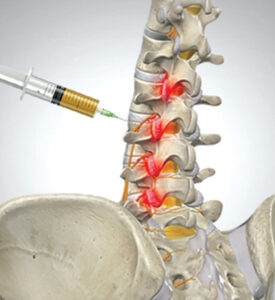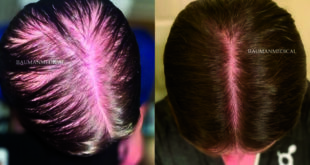Chronic low back pain is a condition that can significantly impact your quality of life, limiting activities and even interrupting sleep. Traditional treatments such as physical therapy, medications and surgery, often have limited success and may carry risks. In recent years, Platelet-Rich Plasma (PRP) therapy has emerged as a promising regenerative treatment for spinal pain.
 Understanding PRP Therapy
Understanding PRP Therapy
PRP is a suspension of platelets in plasma, obtained from your own blood. PRP contains a high level of growth factors and substances called cytokines that play a crucial role in tissue repair and regeneration. It is generally painless to obtain, using a simple blood draw followed by several processing steps to concentrate the platelets to the desired level. For pain involving the spine, concentrated PRP may be injected into ligaments, joints, discs, around nerve roots or all the above. This approach aims to enhance the body’s natural healing processes.
Mechanism of Action in Spinal Pain
The intervertebral discs and facet joints are common sources of LBP, often due to degenerative changes. PRP therapy targets these areas by delivering growth factors that promote cell proliferation, matrix synthesis, and anti-inflammatory effects. Studies have demonstrated that PRP can stimulate cell proliferation and metabolic activity of intervertebral disc cells, suggesting potential benefits in disc regeneration.
Clinical Evidence Supporting PRP for Low Back Pain
A systematic review published in Biomedicines evaluated the efficacy of PRP injections in managing LBP. The review highlighted that PRP might restore both structure and function in spines affected by disc degeneration. The authors concluded that PRP injections could be a viable therapeutic option for patients with degenerative disc disease, offering pain relief and functional improvement.
Another critical review in the Journal of Pain Research assessed the role of PRP in managing chronic LBP. The study reported that PRP injections are safe and effective in reducing back pain, with patients experiencing significant improvements in pain and function. The authors emphasized the need for further large-scale studies to confirm these findings but acknowledged the potential of PRP as a minimally invasive treatment option.
Comparative Studies: PRP vs. Corticosteroids
Steroid injections are commonly used for LBP management due to their anti-inflammatory properties. However, their effects are often short-lived, and repeated use can lead to adverse effects. A systematic review with meta-analysis compared the clinical efficacy of PRP against corticosteroids for treating LBP. The study found that PRP provided more sustained pain relief and functional improvement than corticosteroids, suggesting that PRP could be a superior alternative for long-term management of LBP.
Safety and Considerations
PRP therapy is generally considered safe, given its natural source, which minimizes the risk of immune reactions and disease transmission. Reported side effects are typically mild and may include temporary pain at the injection site. However, as with any medical procedure, it’s essential to consult with a qualified healthcare provider to determine if PRP therapy is appropriate for your specific condition.
Conclusion
Emerging peer-reviewed research indicates that PRP therapy holds promise as an effective treatment for spine-related pain, particularly in cases of degenerative disc disease and chronic LBP. While initial findings are encouraging, further large-scale, randomized controlled trials are necessary to establish standardized protocols and confirm long-term efficacy. As the field of regenerative medicine advances, PRP therapy may become a cornerstone in the non-surgical management of spinal pain, offering hope to those seeking relief from chronic pain.
844-GO PROLO (844-467-7656)
www.wozwellness.com
 South Florida Health and Wellness Magazine Health and Wellness Articles
South Florida Health and Wellness Magazine Health and Wellness Articles




